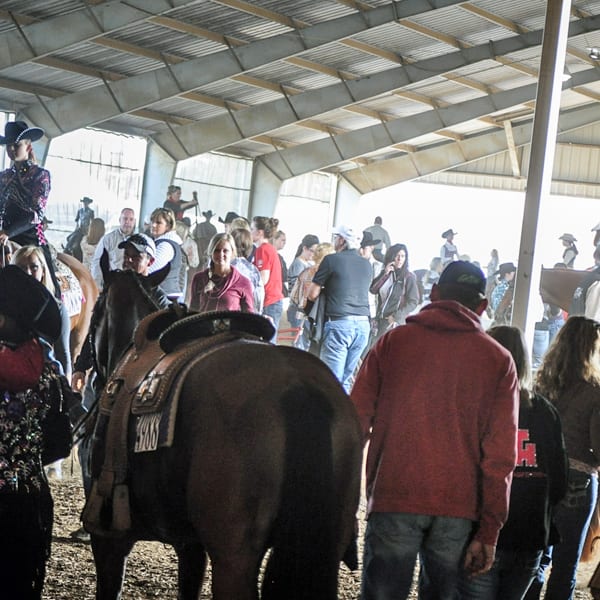Anyone who has tried to prepare to show at the Congress knows it can be a madhouse. Back in the 70s and 80s, the fairgrounds had a racetrack where people would ride their horses, and, unlike today, ear plugs were not allowed when showing. Personally, I owned and showed a horse named Son Of A Rebel, who did quite well at this show, but the sensory overload that is unique to the Congress would drive him crazy.
Rebel hated loud noises, clapping, flags flapping, any sudden movements, overhangs, tents, the tunnel into the coliseum, alleyways and having to stand to get his picture taken. You name it – he did not like it if it had anything to do with the Congress. He is not the only horse to feel this way about the Congress.
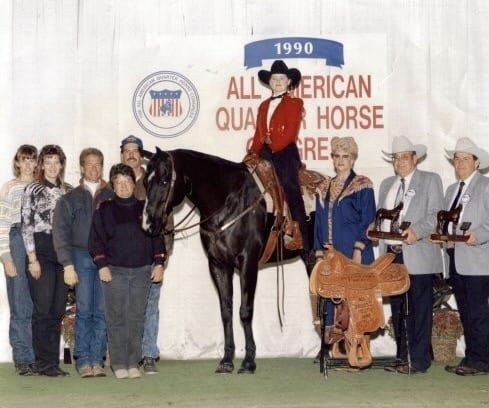 Every year, Rebel would prance around in the tunnel so I had to keep walking him in circles. Then, I had to time it perfectly to get to the start cone during the pattern classes so we would be able to start our pattern immediately. Otherwise, he’d get nervous and would not stand still. He was also more secure when you were on his back, so showmanship was even worse. He would run around in circles in the lineup. Needless to say, it was a challenge.
Every year, Rebel would prance around in the tunnel so I had to keep walking him in circles. Then, I had to time it perfectly to get to the start cone during the pattern classes so we would be able to start our pattern immediately. Otherwise, he’d get nervous and would not stand still. He was also more secure when you were on his back, so showmanship was even worse. He would run around in circles in the lineup. Needless to say, it was a challenge.
These past experiences made me wonder what measures today’s trainers take to prepare their horses to stay calm in this circus-like atmosphere. The sensory overload on some horses is unbearable, yet, trainers and exhibitors have to come up with ways to calm and relax their horses. GoHorseShow talked to some top trainers in the industry, and we have compiled a list of ten tips to help overcome the chaos known as Congress.
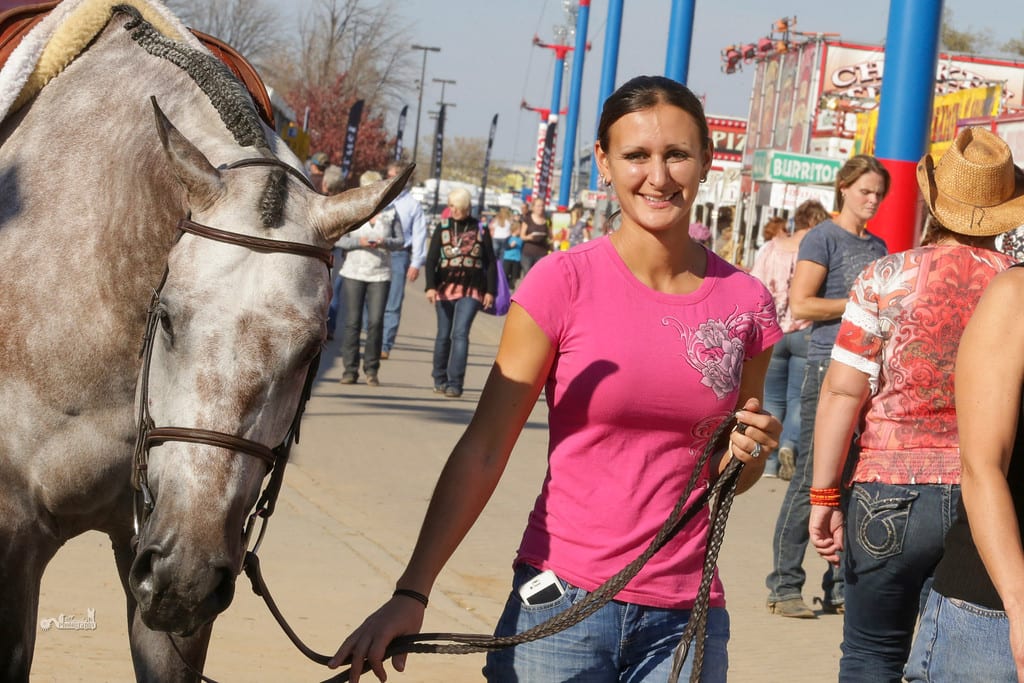 1) Recreate Crowd Noises – Trainer Julian Harris of Topline Performances horses located in Parker, Colorado recommends downloading crowd noises to play on a speaker while you ride at home. “It might get a little western at first, but they’ll get used to it. Don’t put it on full blast at once or you might have a problem.” This will help the horses adjust to constant loud noises before they even get to the show.
1) Recreate Crowd Noises – Trainer Julian Harris of Topline Performances horses located in Parker, Colorado recommends downloading crowd noises to play on a speaker while you ride at home. “It might get a little western at first, but they’ll get used to it. Don’t put it on full blast at once or you might have a problem.” This will help the horses adjust to constant loud noises before they even get to the show.
Trainer Farley McLendon agrees, “I do my best to expose them to all sorts of different arenas, atmospheres, and disciplines before heading to the Congress. At home, I have banners hanging from the fence, the radio on, and my kiddos running around being typical kids.”
2) Do Your Homework – Brad Ost of Highpoint Performance says to make sure that the horse has been to a busy show a couple of times prior to the Congress. He also suggests riding some of the sensitive horses at night when at the Congress as you can get more done in a calmer atmosphere.
Trainer Larry Spratto from Wisconsin agrees, “We have had good luck with the ear plugs, and lots of walking in the different arenas. We also pony the ones with a lot of excess energy. When we had a lot of futurity horses, we would bring them to a “Gordyville” type environment to see if they could deal with the “Celeste” environment. Then, after making that evaluation, we would lay out a schedule that would help that horse over the summer to get ready mentally for the Congress atmosphere.
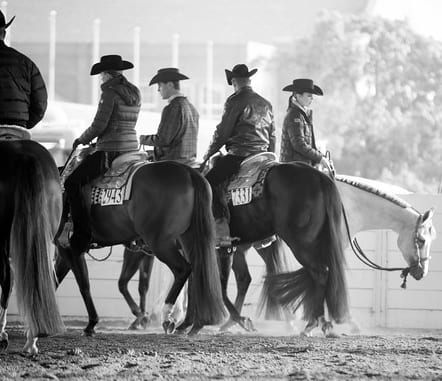 3) Selective Riding Times – Wade Black of Boerne, Texas says, “Some things I do to help my horses get used to the Congress atmosphere is to be selective about when and where I ride, especially with my young ones. Try not to take them out when the pens are really crowded as that seems to add to their adrenaline. I’ll usually go out nightly and longe in the warm up rings when it’s quiet. I try not to change their routine too much to avoid them getting too stressed.”
3) Selective Riding Times – Wade Black of Boerne, Texas says, “Some things I do to help my horses get used to the Congress atmosphere is to be selective about when and where I ride, especially with my young ones. Try not to take them out when the pens are really crowded as that seems to add to their adrenaline. I’ll usually go out nightly and longe in the warm up rings when it’s quiet. I try not to change their routine too much to avoid them getting too stressed.”
4) Take it Slow – Hunter trainer Lainie DeBoer from Minnesota says that she tries to layover at a barn close to the Congress several days beforehand. They turn the horses out in pastures and work the horses twice a day to get settled. “That way you are not pulling into a strange place in the middle of the night after a 14-hour haul. We usually stay less than an hour away and set up everything beforehand,” Lainie says. “That way we can unload them right away after a short trip. I like to lead my horses around. I take them on a lot of hand walks and try to find a patch of grass somewhere. I think of them as an onion, and I just peel away layer by layer. I do this until it looks like they take a breath. Then, I usually start to ride them. and they seem so take it all in. I am not a big believer in riding them right away or they get too overwhelmed, and it adds to the anxiety.”
 5) Maintain Focus – “I think maintaining focus is a key factor, which can be especially difficult with the younger horses,” says Adam Mathis, an assistant trainer for Gil Galyean (pictured left). “We like to try and keep the changes in their program to a minimum. I want to make sure they are as prepared as much as they can be, both physically and mentally. We like to get them very acquainted and comfortable with the pen that they will be showing in. So, every opportunity we have to get in the pen, we take advantage of. I try to not make a huge deal of the crowd or all the commotion.”
5) Maintain Focus – “I think maintaining focus is a key factor, which can be especially difficult with the younger horses,” says Adam Mathis, an assistant trainer for Gil Galyean (pictured left). “We like to try and keep the changes in their program to a minimum. I want to make sure they are as prepared as much as they can be, both physically and mentally. We like to get them very acquainted and comfortable with the pen that they will be showing in. So, every opportunity we have to get in the pen, we take advantage of. I try to not make a huge deal of the crowd or all the commotion.”
Trainer Adam Wainscott of Nolensville, Tennessee agrees, “Repetition is the key, especially with younger horses. Keep doing the same thing over and over again before you get to the show, so when you get to the Congress, keep that routine – it will keep them calmer.”
Blair Townsend of Masterson Farms adds, “We also take a pony horse with us so they can see all the sights and sounds, we spend a lot of time in the show pens at night so they are as comfortable in there as they can be.”
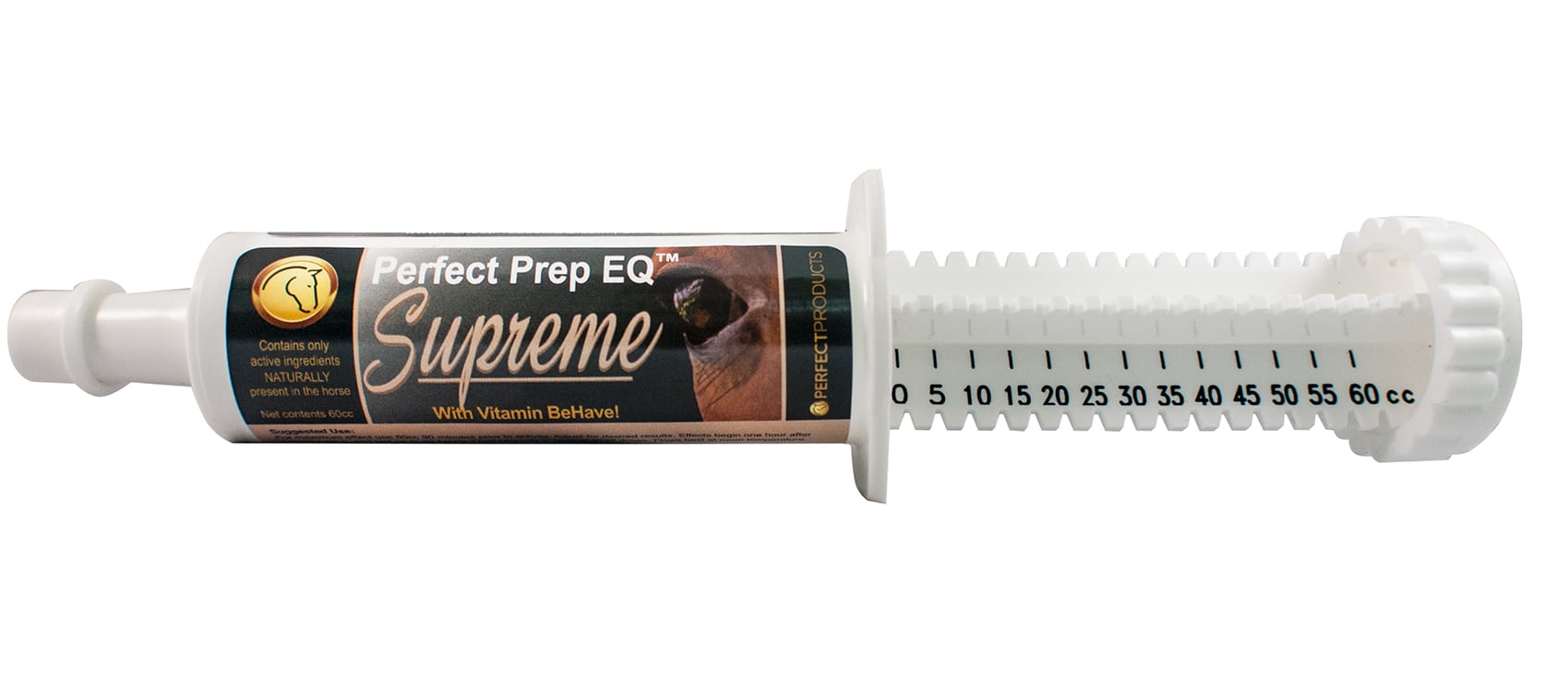 6) Give them Supplements – Trainer Chris Gray of Centre Hall Pennsylvania says he takes advantage of calming products, such as Equi-Calm, and UlcerGard. “These products help to combat anxiety and maintain proper gut health. A horse that isn’t feeling 100 percent, is going to be way less willing to participate.” Trainer, Brent Maxwell adds, “We also use Perfect Prep Products along with our regular work regimens to help calm the nervous or anxious horses.”
6) Give them Supplements – Trainer Chris Gray of Centre Hall Pennsylvania says he takes advantage of calming products, such as Equi-Calm, and UlcerGard. “These products help to combat anxiety and maintain proper gut health. A horse that isn’t feeling 100 percent, is going to be way less willing to participate.” Trainer, Brent Maxwell adds, “We also use Perfect Prep Products along with our regular work regimens to help calm the nervous or anxious horses.”
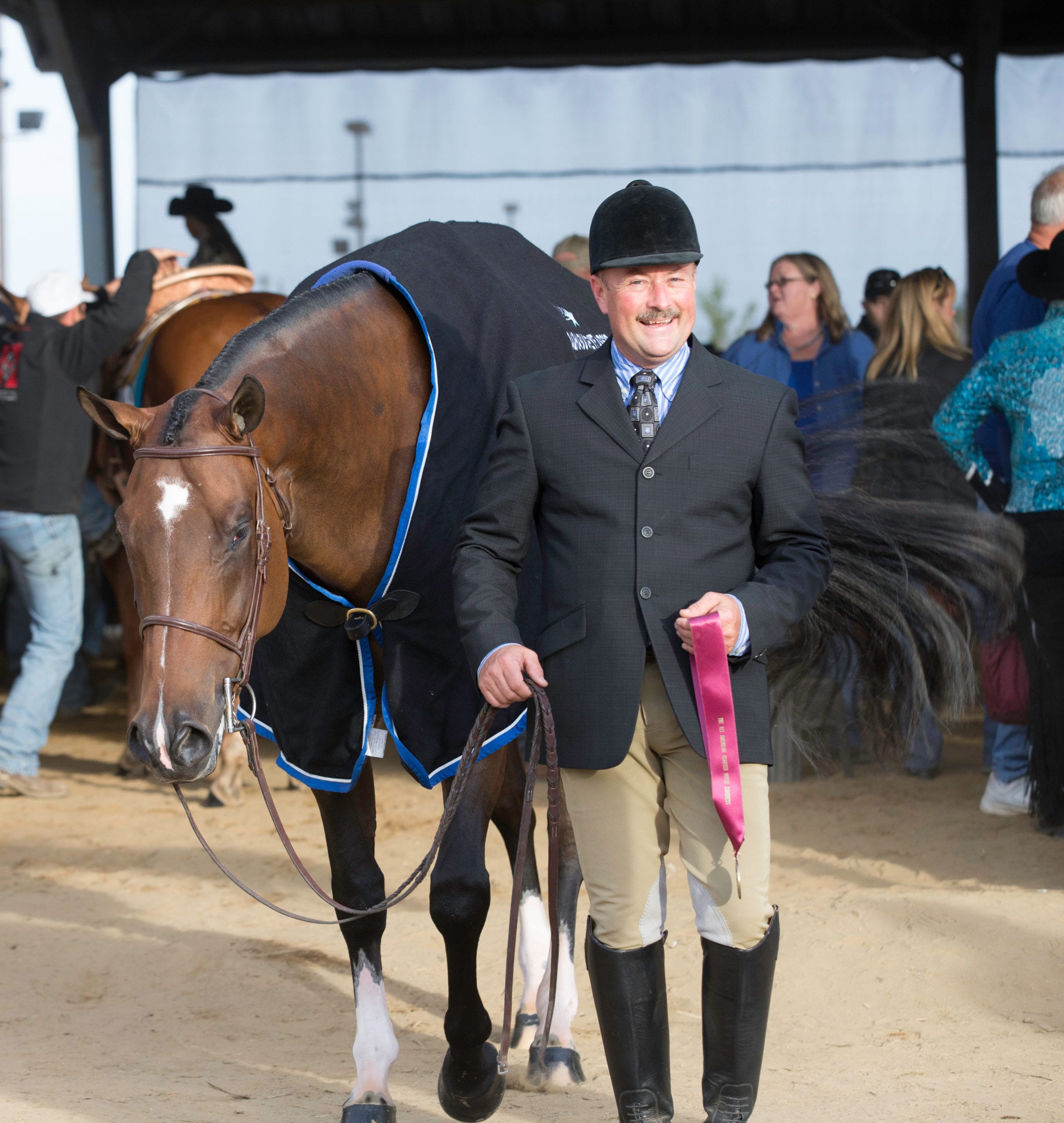 7) Be Patient – “Patience is a virtue!” says Brent Maxwell (pictured left). “Know your horse’s limits and remember with the extra stimuli and erratic ride schedules, your horse might be just as out of sorts as you are. Use your time wisely in helping your horse adapt to the high energy environment by riding more often for less amounts of time. That way your horse gets more exposure to his surroundings.”
7) Be Patient – “Patience is a virtue!” says Brent Maxwell (pictured left). “Know your horse’s limits and remember with the extra stimuli and erratic ride schedules, your horse might be just as out of sorts as you are. Use your time wisely in helping your horse adapt to the high energy environment by riding more often for less amounts of time. That way your horse gets more exposure to his surroundings.”
Maxwell adds, “Getting to the Celeste arena can sometimes be the worst as the crowd through the food vendor area can be congested and a little tough to negotiate. We plan ahead and go to that arena earlier than normal to give the horse time to get settled and comfortable in the makeup arena. We also have those horses walk through that area days ahead of the show schedule to identify any problem areas for that horse. Of course, that’s subject to change with the weather conditions – rain, wind, and occasional snow!”
 8) Don’t Panic – “I try and give them a couple days to settle in and adjust to everything before I start really asking for all their attention and cooperation,” Alyse Roberts of Tuttle, Oklahoma states. “I try not to panic the first day or two when they are running around on the longe line with their tails up and snorting at everything. Usually, after those first couple days, they settle right in.”
8) Don’t Panic – “I try and give them a couple days to settle in and adjust to everything before I start really asking for all their attention and cooperation,” Alyse Roberts of Tuttle, Oklahoma states. “I try not to panic the first day or two when they are running around on the longe line with their tails up and snorting at everything. Usually, after those first couple days, they settle right in.”
9) Keep Going to Shows Throughout the Year – “When looking ahead to the Congress, with all the sights and sounds that our young horses will encounter, it takes special preparation,” Halter trainer Tom Robertson and his wife, Mary told us. “We have found that there is no substitute to going to horse shows to get them indoctrinated into what they will be exposed to in Columbus. Despite the fact that we qualify our horses for the World Show early in the year, it is very important to get them out to shows regularly during the summer. They learn to accept the circus-like atmosphere and take it in stride if they travel more frequently. Because we are required to use a lip cord, per new AQHA rules, practice at home using them is a daily ritual. Maintaining good control for our youth and amateur exhibitors in the show pen can only be expected if our horses are comfortable using them.”
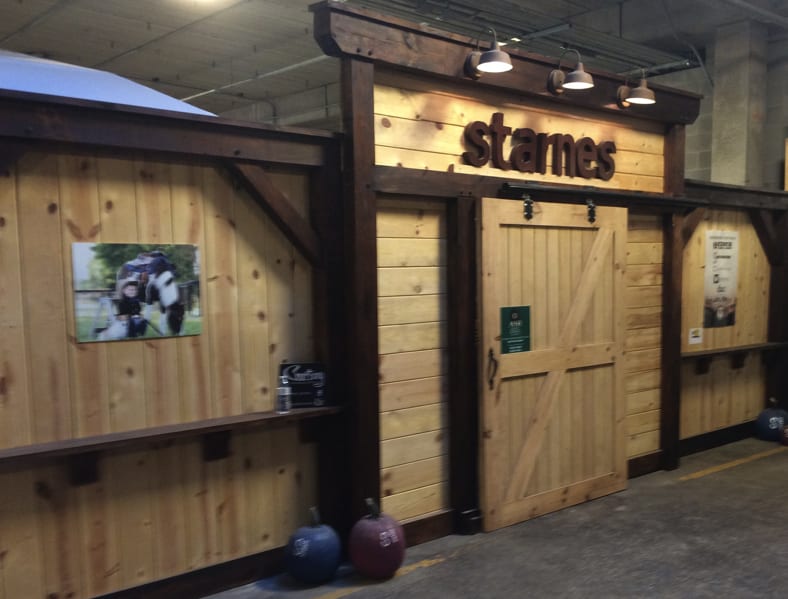 10) Pick Barns and Build Stall Fronts to Create a Low Key Environment – Trainer, Missy Thyfault from Ohio chooses to stall in the Voinovich if possible because she feels it is a more “low-key” environment. “It has a feel more like being at home without the echoes and noise level. Then, I think as trainers, we all build our stall fronts to minimize the traffic and noise as well. My set up is like a barn within the barn and provides some quiet inside the sliding doors. We put up plywood dividers between each horse so they have some privacy from each other which helps especially for when they are eating.”
10) Pick Barns and Build Stall Fronts to Create a Low Key Environment – Trainer, Missy Thyfault from Ohio chooses to stall in the Voinovich if possible because she feels it is a more “low-key” environment. “It has a feel more like being at home without the echoes and noise level. Then, I think as trainers, we all build our stall fronts to minimize the traffic and noise as well. My set up is like a barn within the barn and provides some quiet inside the sliding doors. We put up plywood dividers between each horse so they have some privacy from each other which helps especially for when they are eating.”
Thyfault adds, “Also having extra help so everything is done in advance and the clients feel prepared is a must. Calm people help keep calm stock. Then, sometimes I say a little prayer before heading through the gates!”


